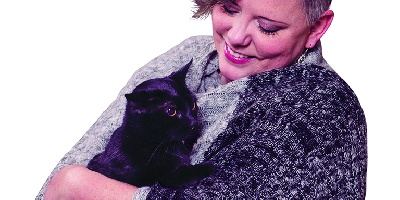How to keep your home clean to help guard against COVID-19, other illnesses
 Keeping your hands clean is a basic part of keeping your home clean during times of illness.
Keeping your hands clean is a basic part of keeping your home clean during times of illness.The COVID-19 pandemic is a good reminder to disinfect high-touch areas frequently to help keep everyone in your home healthy. Such cleaning can also protect against colds, flus and other diseases caused by viruses, fungi or bacteria.
“Disinfecting your home should be part of your usual cleaning routine, whether or not anyone at home is sick,” says Sue Murphy, director of environmental services at Upstate Medical University. “You should ramp up your cleaning by disinfecting high-touch surfaces as soon as someone in your home is ill,” and keep the patient sequestered to his or her own spaces, away from others.
She points out that viruses can live on various surfaces anywhere from a few hours to a few days.
“Hand-washing and disinfecting your home are the best methods of limiting the spread of any illness in your home,” Murphy says. When someone in your home is unwell, everyone should wash their hands thoroughly with soap and water for 20 seconds, even more often than usual. Cover your face during coughs and sneezes, and wash your hands after doing so.
How to clean
“You need an EPA-registered disinfectant that targets cold and flu germs, so check the label and follow the directions,” Murphy says. The EPA is the federal Environmental Protection Agency, which includes a list on its website of disinfectants for use against the coronavirus that causes COVID-19.
To start, wipe away any crumbs, dust or dirt. Spray the disinfectant to thoroughly cover the area and let it sit for at least 30 seconds. Wipe with a disposable paper towel that can be thrown away immediately or a cotton cloth that can be machine washed after every use. Single-use disinfectant wipes can also be used. In its guidance at coronavirus.gov, the EPA and Centers for Disease Control and Prevention advise wearing gloves while cleaning.
“Sponges should not be used for disinfecting surfaces, as they can harbor bacteria and, when not properly maintained, can bring more germs to the surface,” Murphy says.
To clean high-touch hard surfaces, you can mix 1/3 cup of bleach with 1 gallon of water to wipe down all hard, non-wood surfaces and floors. Read your label to make sure your bleach is intended for disinfection, and that the product is not past its expiration date. Your solution should be mixed fresh every day, as chlorine can lose its effectiveness over time. Dump the mixture after every usage to minimize risk to children or pets in the home.
Murphy cautions never to mix disinfectant cleaners with other cleaning products like ammonia or bleach because the resulting fumes can be toxic.
What to clean
While it’s tempting to try to bleach the whole house, focus first on the high-touch objects and areas of your home.
Phones, tablets, computers and remote controls. These devices are part of daily life and are in constant contact with our hands. To clean these delicate electronics, Apple recommends using soft, lint-free cloths instead of paper towels or abrasive towels. Do not use bleach, and do not spray cleaners on the device. Use a 70-percent isopropyl alcohol wipe to gently wipe nonporous surfaces, such as the display and keyboard. Do not submerge the device or get moisture in any opening. And make sure to unplug any external power source before cleaning. Avoid excessive wiping.
Wear disposable gloves while cleaning your devices, and wash your hands afterward.
Bathrooms. Any surface that is touched should be disinfected including doorknobs; light switches; toilet seat, handle and cover; sink, faucet, even the tube of toothpaste and toiletries. Throw away your toothbrush after an illness. Do not use the same paper towel or cloth for sinks and toilets.
If the sick person in your home cannot have his or her own bathroom, they should have their own hand towel -- and machine wash it daily.
Kitchen. Any surface that is touched should be disinfected, including doorknobs, light switches, sink, faucet, refrigerator handle, cabinet hardware, countertops, table and chairs. To prevent the spread of germs throughout the household, the sick person should not be preparing food for others and should have his or her own set of dishes and utensils for use. All dishes and utensils should be washed at high heat in the dishwasher.
If you are hand-washing, add an additional step of dipping the washed dishes in the chlorine bleach solution; then rinse thoroughly with hot water.
Living areas. It’s hard to stay confined to one space, so if the sick person wants to rest in other living areas, cover the furniture with sheets or blankets and change them frequently. Remove decorative pillows from the space.
Clothing, sheets, blankets and towels. When a sick person’s symptoms subside, wear rubber gloves to strip the bed and immediately place in the empty washing machine. Wash all in hot water with detergent. There are laundry additives that can give your usual detergent a germ-killing boost, like Borax or Lysol Laundry Sanitizer, or add 1 cup of white vinegar to the rinse cycle. Once the sick person’s laundry is done, run an empty hot-water cycle with 2 cups of vinegar instead of detergent to clean the inside of the washing machine. Disinfect the outside of the machine with paper towels and a disinfectant.
Cars. Whether you are the passenger or the driver, your trip to the doctor or pharmacy can leave germs behind. Disinfect any surface that gets touched – door handles, steering wheel, radio buttons, climate-control units, seat belts, mirrors -- and take special care if you have a sick child in a car seat. Remove the car seat; machine wash any fabric pieces, and wipe down the hard surfaces with a disinfectant.
Since leather and imitation leather seats may have a protective urethane coating, which can break down through use of alcohol-based products, soap is the safest for cleaning fabrics and leather seats. Clean gently, with a small amount of water. Leather usually should have a conditioner applied after cleaning.
It’s a good idea to check your car manufacturer’s advice on how to clean your vehicle, since it may vary from the above for some components.




